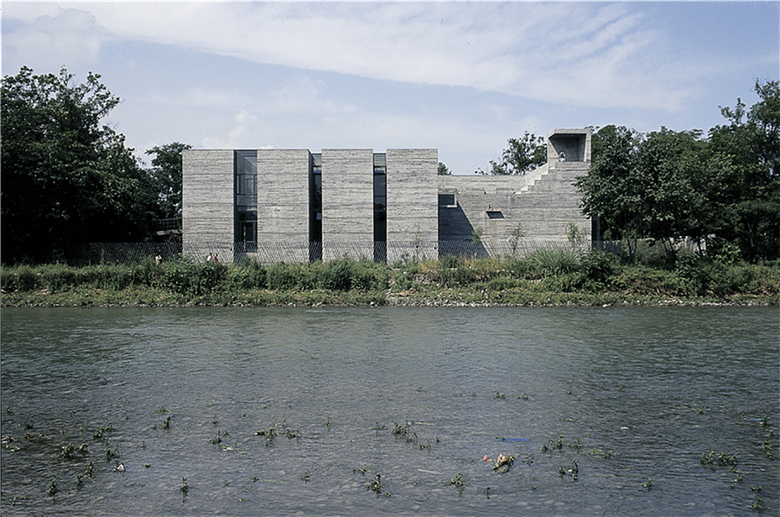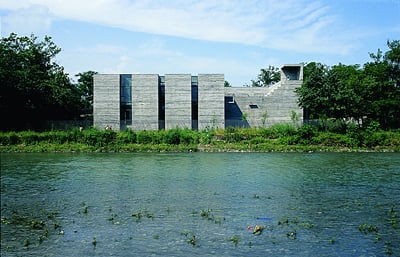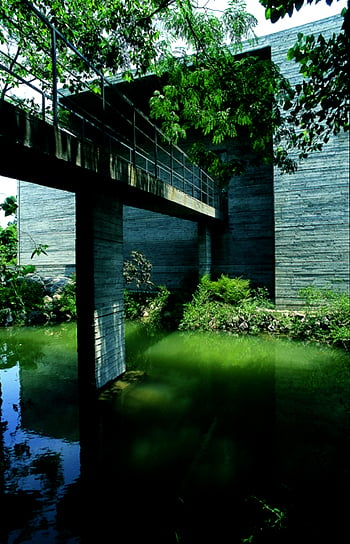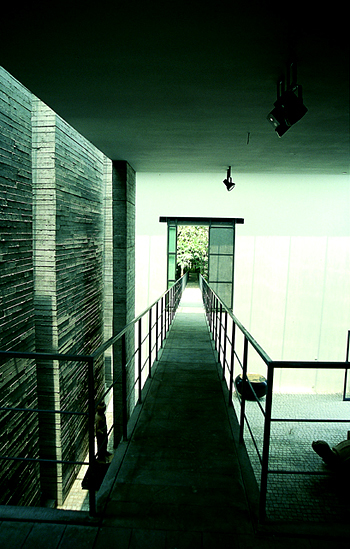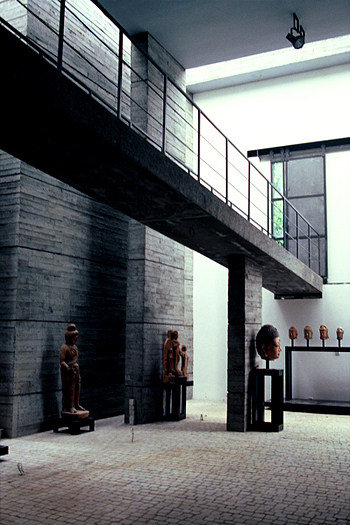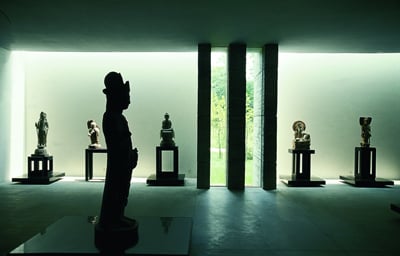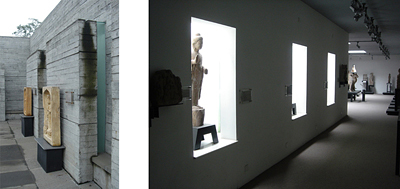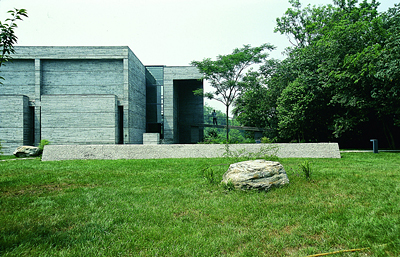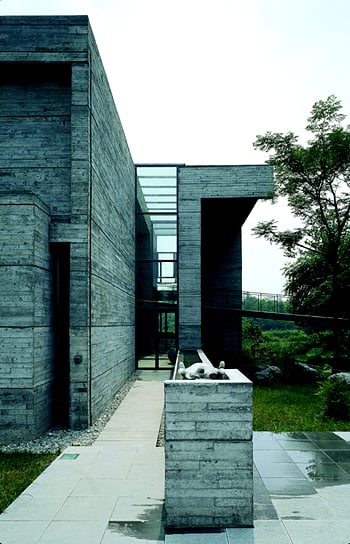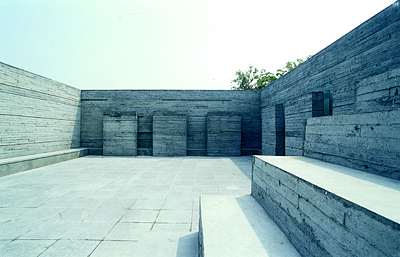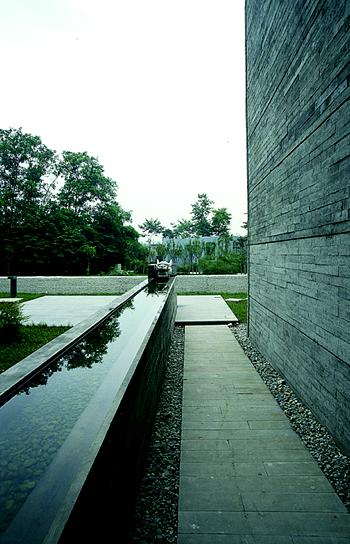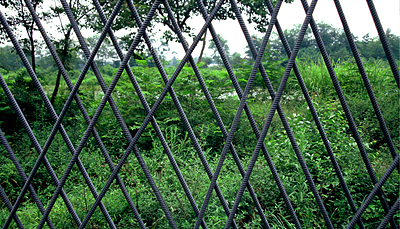Luyeyuan Stone Sculpture Art Museum
Chengdu
- Architects
- Jiakun Architects
- Year
- 2002
Luyeyuan Stone Sculpture Art Museum
Location: Yunqiao Village, Xinmin Town, Pi County, Chengdu, Sichuan
Site Area: 6.670 square meters
Building Area: 1.037 square meters
Floor Area: principle part 990 square meters, rebuilt straw house 200 square meters, subordinate building 200 square meters
Client: ZHONG Ming
Project Designer: LIU Jiakun (Collaborator: WANG Lun)
Structure Designer: ZHAO Ruixiang
Design: 2-6/2001
Construction: 6/2001-7/2002
Contactor: GoArchit Art Engineering Co., Ltd., Sichuan
Materials: Reinforced Concrete, Shale Brick, Pebble, Blue Stone, Glass
and Steel
Cost: 3.200.000 RMB
The site of this project is a plain field between the riverbed and the woods, which is composed of four areas. On the largest is the museum, while the other three areas are used for parking, open exhibition and a subordinate building. Bamboo became the natural division for each part. Routes string through different areas, gradually float upon the ground, through the bamboos and finally lead to the entrance above the lotus pond. The Museum display is designed around an atrium, and the light, exhibits and the landscape are organized by carefully dealing with gaps between the building blocks.
The museum is a collection of stone sculptures, thus the architecture wants to tell people a story of an “Artificial Stone”. As local construction technique is low and flexible modification afterwards is always possible, a combined technique of frame structure with fair-faced concrete and shale bricks is created. Bricks on the inner side of the combined wall are used as a template to make sure that the concrete is poured vertically, as well as to serve the later modifications as a soft liner. Indention templates with stripes are used to pour the fair-faced concrete walls of the main building in order that a clear pattern is formed, a strong impression of walls is made and the defect caused by the lack of experience on the pouring technique is hidden behind the dense and wild lattice. All these above are adopted to satisfy aesthetic and spiritual pursuits of the architect, at the same time, to solve various problems we faced as architects in China today.
In China due to the inconsiderate forehand plan, architectural projects are more likely to change optionally afterwards. The interior of the mixed wall adopts bricklaying and plastering techniques. This can cope with different kinds of changes afterwards.
Because of the rude construction technology, it’s very hard to make sure the perpendicularity of the walls during the pouring course. If laying the interior walls first, the interior walls can be the formwork when pouring the outer walls, and so the perpendicularity is ensured.
I searched to find a way out, to an approach of contemporary architectural aesthetics with the local conditions on the building side.
Related Projects
Magazine
-
WENG’s Factory / Co-Working Space
1 day ago
-
Reusing the Olympic Roof
6 days ago
-
The Boulevards of Los Angeles
1 week ago
-
Vessel to Reopen with Safety Netting
1 week ago
